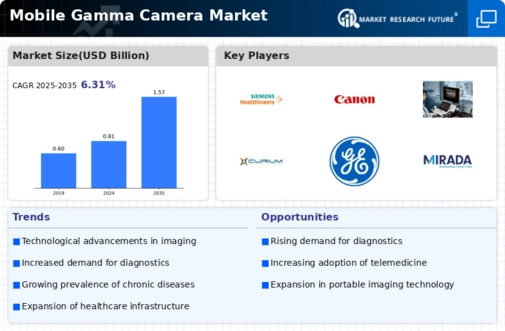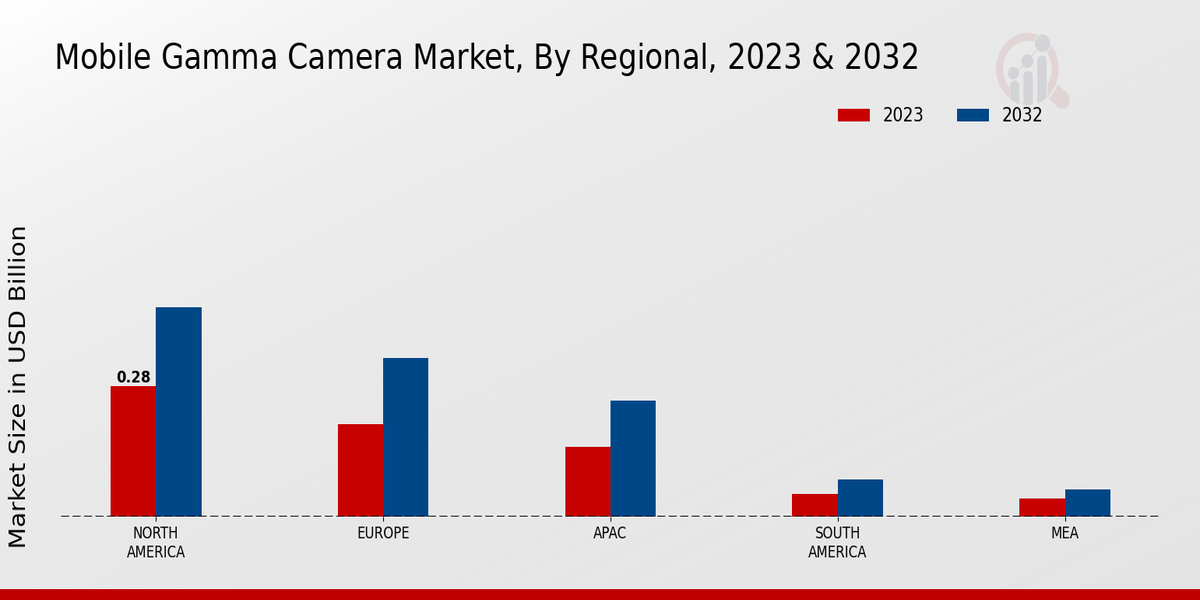Aging Population
The aging population worldwide is a critical driver for the Global Mobile Gamma Camera Market Industry. As individuals age, they are more susceptible to various health conditions that require diagnostic imaging. The World Health Organization indicates that the global population aged 60 years and older is expected to reach 2.1 billion by 2050. This demographic shift is likely to increase the demand for mobile gamma cameras, as healthcare systems strive to provide accessible and efficient imaging services to older adults. Consequently, the market is anticipated to grow, with projections indicating a rise to 1.57 USD Billion by 2035.
Market Growth Projections
The Global Mobile Gamma Camera Market Industry is projected to experience substantial growth over the next decade. With a compound annual growth rate (CAGR) of 6.22% anticipated from 2025 to 2035, the market is poised for significant expansion. This growth trajectory is driven by various factors, including technological advancements, increasing demand for diagnostic imaging, and an aging population. As the market evolves, stakeholders are likely to witness a surge in innovation and competition, further enhancing the capabilities and applications of mobile gamma cameras in diverse healthcare settings.
Technological Advancements
The Global Mobile Gamma Camera Market Industry is experiencing rapid technological advancements, which enhance imaging capabilities and diagnostic accuracy. Innovations such as digital detectors and advanced image processing algorithms are improving the quality of scans, making them more reliable for clinical decision-making. For instance, the integration of artificial intelligence in image analysis is streamlining workflows and reducing interpretation errors. These advancements are likely to drive market growth, as healthcare providers increasingly adopt mobile gamma cameras to improve patient outcomes and operational efficiency.
Government Initiatives and Funding
Government initiatives and funding aimed at enhancing healthcare infrastructure are playing a pivotal role in the Global Mobile Gamma Camera Market Industry. Various countries are investing in advanced medical technologies to improve healthcare delivery and accessibility. For instance, funding programs that support the acquisition of mobile gamma cameras in underserved areas are likely to expand their usage. These initiatives not only promote the adoption of innovative imaging solutions but also contribute to the overall growth of the market. As governments prioritize healthcare advancements, the mobile gamma camera market is expected to flourish.
Rising Demand for Diagnostic Imaging
There is a growing demand for diagnostic imaging services globally, which is significantly impacting the Global Mobile Gamma Camera Market Industry. As the prevalence of chronic diseases increases, healthcare facilities are seeking efficient imaging solutions to facilitate timely diagnosis and treatment. The market is projected to reach 0.81 USD Billion in 2024, reflecting this rising demand. Mobile gamma cameras offer flexibility and accessibility, allowing healthcare providers to conduct imaging in various settings, including remote locations. This adaptability is crucial in meeting the needs of a diverse patient population.
Increased Focus on Point-of-Care Diagnostics
The Global Mobile Gamma Camera Market Industry is benefiting from an increased focus on point-of-care diagnostics. Healthcare providers are increasingly prioritizing rapid and accurate diagnostic tools that can be utilized at the patient's bedside or in remote locations. Mobile gamma cameras align with this trend by offering portable imaging solutions that enhance patient care and reduce wait times for diagnosis. This shift towards point-of-care diagnostics is expected to drive market growth, as healthcare systems recognize the value of immediate imaging capabilities in improving patient outcomes and operational efficiency.



















